The Red River Valley
A lens on North Louisiana
Published: February 29, 2024
Last Updated: June 1, 2024

All photos by Leah Floyd
Communication. A cell phone tower looms above and is surrounded by the cornfields of Lynn Plantation.
Driving, windows down, west along 190 and then north on 71, I pass lots of farmland and small towns like Bunkie and Lecompte as I make my pilgrimage up to the northwestern corner of Louisiana. This is my sixth time visiting the area since I was first introduced to the towns of Belcher, Gilliam, Hosston, Mira, and Ida, all west-lying communities along the Red River, just south of the Arkansas border. These small towns and villages are surrounded by farmland, mainly growing corn, cotton, and soy.
My first encounter with these communities was in 2019, when I was selected as a North Louisiana Artist in Residence through the Ross Lynn Charitable Foundation. I had proposed that during my two-week residency, stationed in an Airstream in the middle of a cotton field, I would photograph how the land and communities were shaped, formed, and influenced by the Red River. Since moving to Louisiana from Florida in 2011, my photographic work has explored the Mississippi River and surrounding lands, and this residency allowed me to expand my scope of documentation of the Mississippi River system. Little did I know then just how much this residency would influence my life.
Photographing the land sets the scene, but my real joy in this ongoing photographic project is becoming more and more interwoven into the communities. The land is drenched with stories of darkness, sadness, joy, light, generations of hard work. I am also creating my own narrative on this land—one of personal transition and growth—aided by the kindness of people and their vulnerability to share their lives with a visitor who has slowly become a friend.
In the last four years I have been welcomed into homes, taken to antique malls, walked through lavender fields, flown in airplanes, kayaked the Red River, rescued a dog as my own, ate delicious home-cooked dinners, was greeted at church, explored a cotton gin, drank whisky on porches, strolled through a pecan orchard, flew kites on the sand banks, meandered amongst muscadine vineyards, perused fabulous fabrics at a quilt shop, and looked at old newspaper clippings from over a hundred years ago while sitting around the dining room table.
This sacred land is changing: crops are shifting, farmers are passing away, and the land is redistributed by heirs no longer interested in farming. I want to continue documenting these changes as the physical use of the land is altering due to corporate farming. There is talk of solar companies transforming thousands of acres of agricultural land into solar farms. How will this affect the land; how will it affect the communities, my friends?
Photographing the farmland, bayous, river, and community provide me an opportunity for sensory absorption and reflection. The act of documenting gives me courage to try new things and go new places, and I feel compelled to keep photographing the beauty and depth of the region, obvious in both the land and the people.
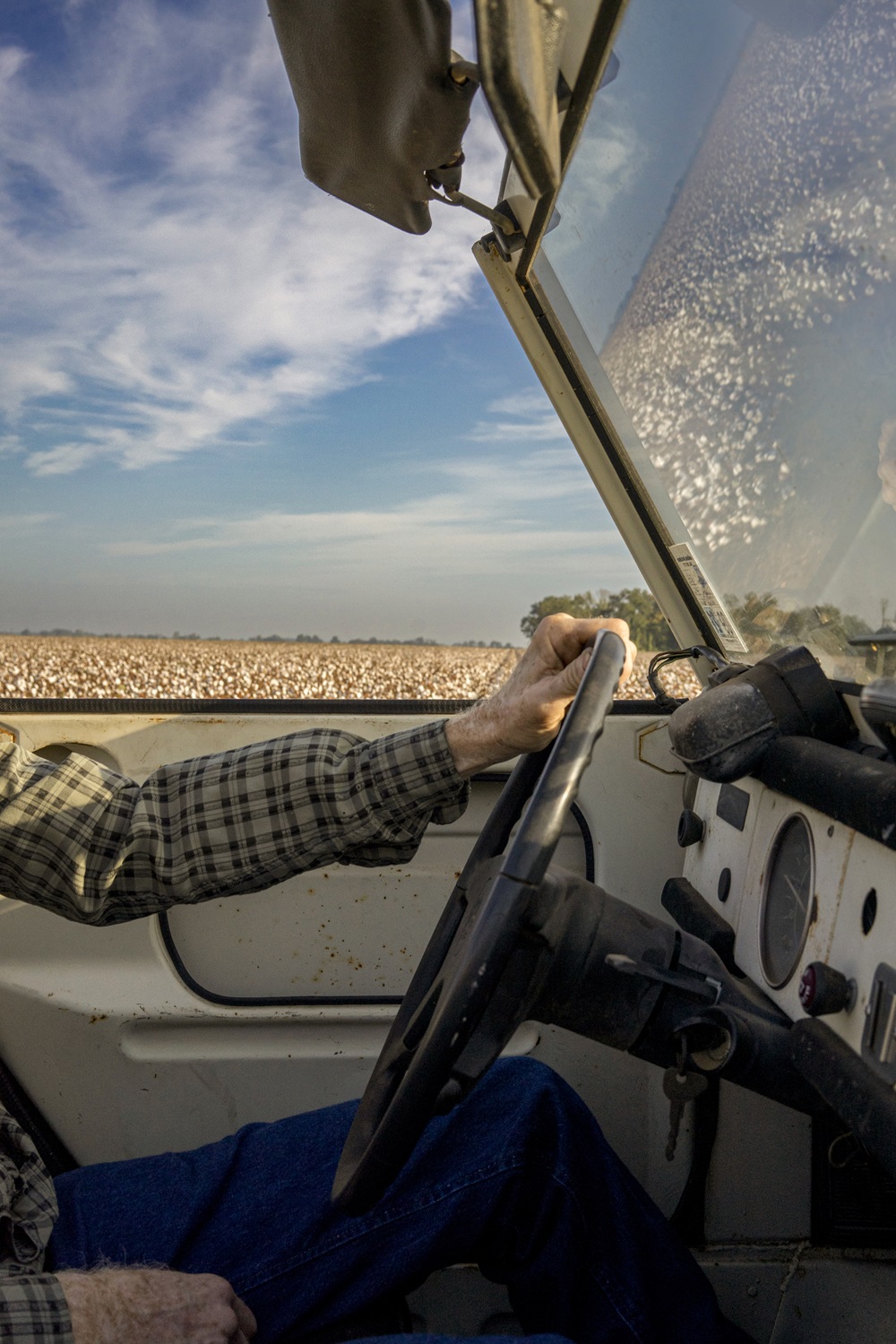
Sunset Cruise. Riding top down in a Volkswagen Thing, we pass through cotton fields waiting to be harvested.
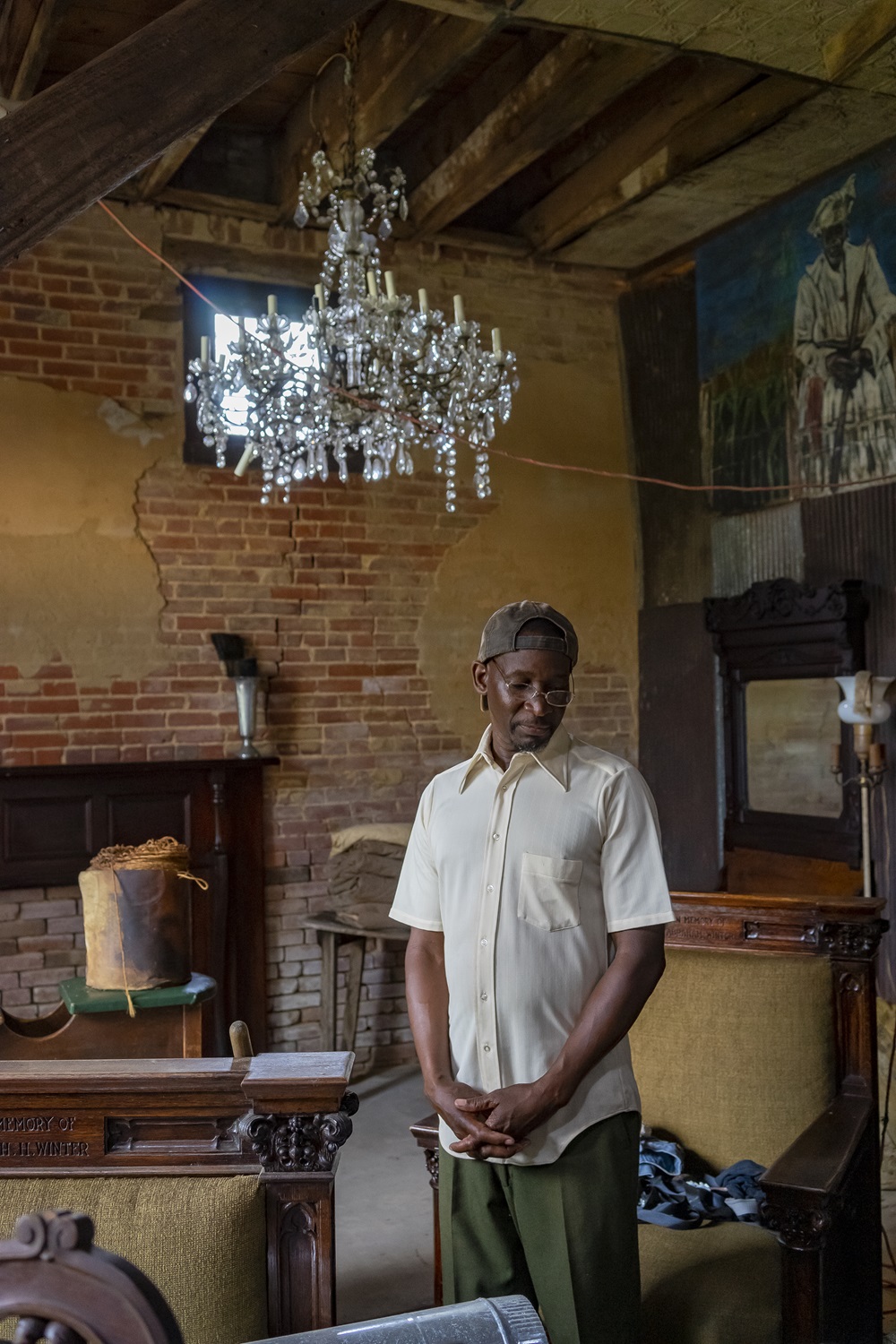
Mimicked Stance. Ray Stevenson, owner of Big Mama’s Antiques and Restoration, located in Hosston, Louisiana, stands amongst some of his collection of African American memorabilia. Stevenson, a historian, collector, and educator of Black history, has been acquiring antiques and archives that tell the story of local African Americans in order to preserve their legacy.

Stare. Cows graze and wander in the pecan orchard of Cairo Plantation.
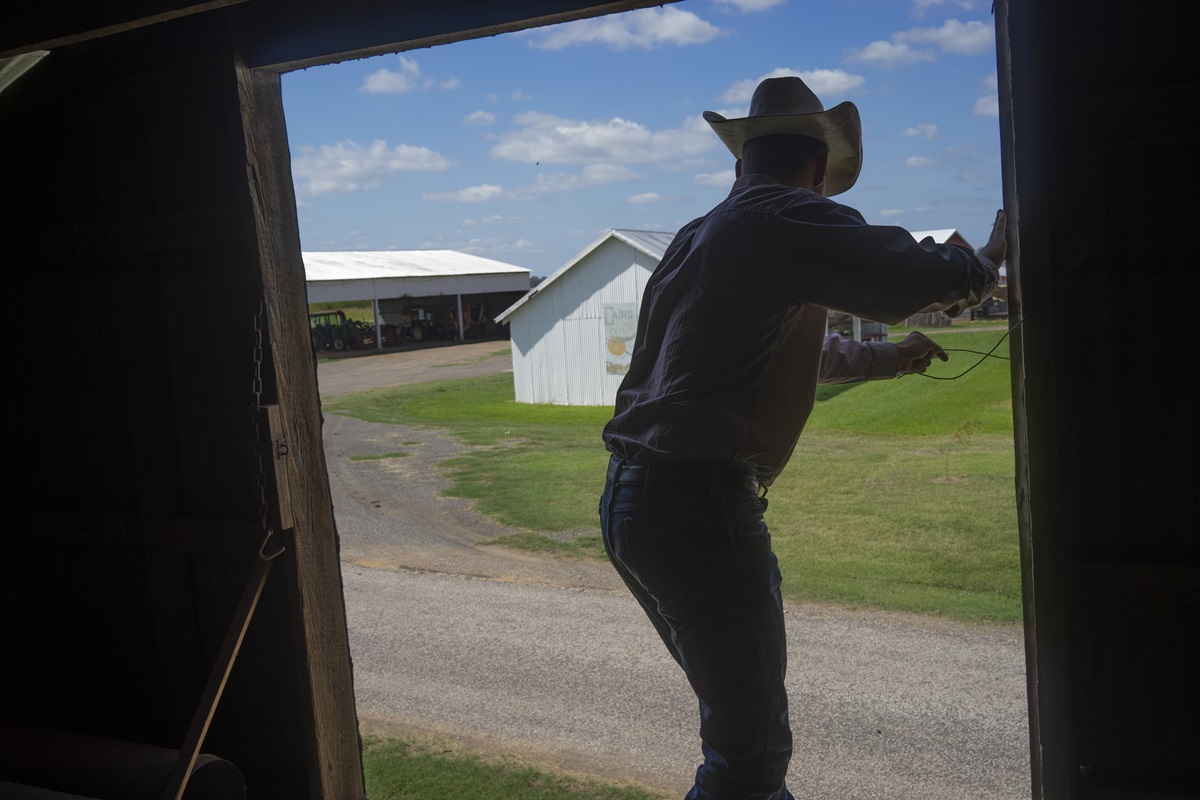
Window into Cairo. Sawyer Sloan opens up the hay loft, providing an elevated view of Cairo Plantation, which was established in 1883. The farm has been owned and operated by the same family for over 100 years.
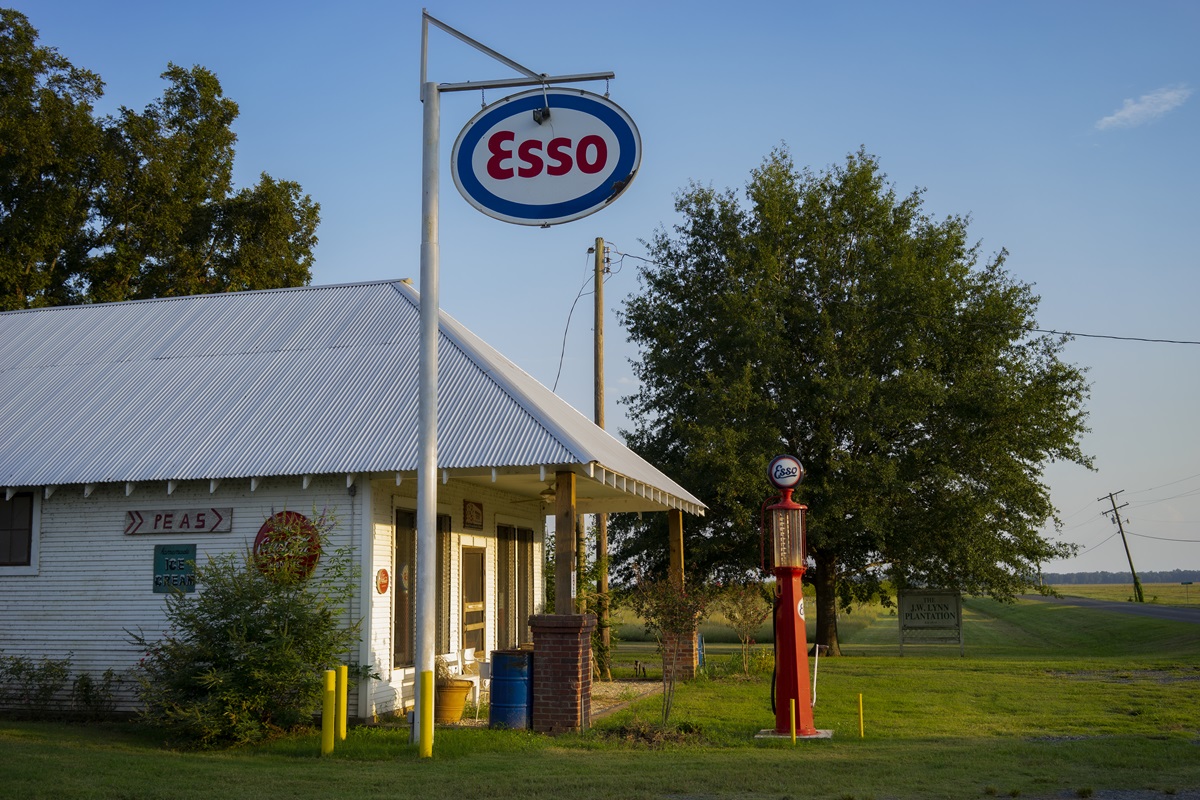
Esso. The commissary at Lynn Plantation, which was first established in 1904, was rebuilt and renovated in the last ten years to house plantation memorabilia and hold community events and art shows.
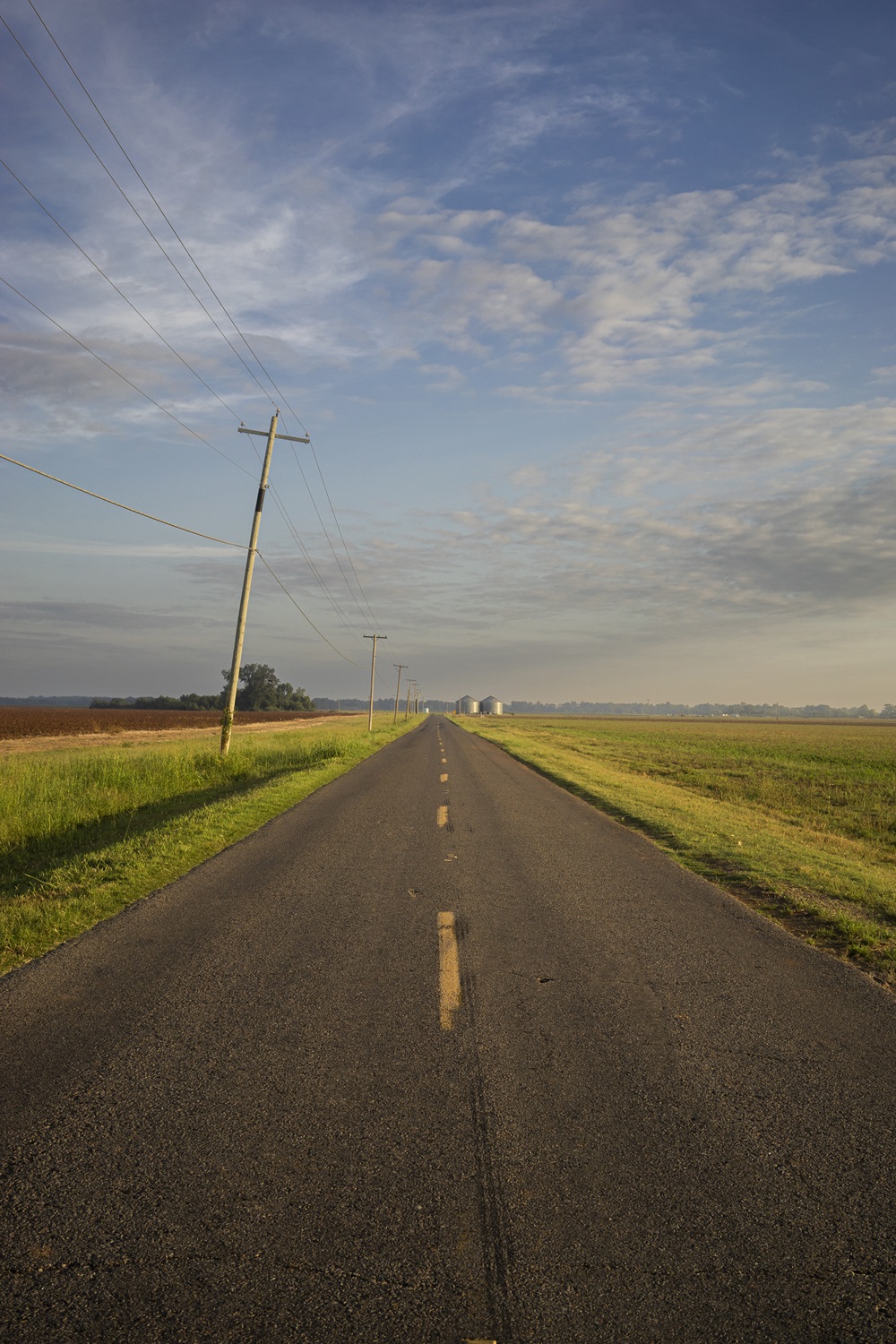
Lone Road. LA Highway 3049 runs along the west side of the Red River, connecting the small towns of Dixie, Belcher, and Gilliam.

HWY 2 Bridge. LA Highway 2 runs east to west, crossing over the Red River and connecting the towns of Hosston and Plain Dealing. Below the bridge is a boat ramp and the North Caddo Recreation Area.
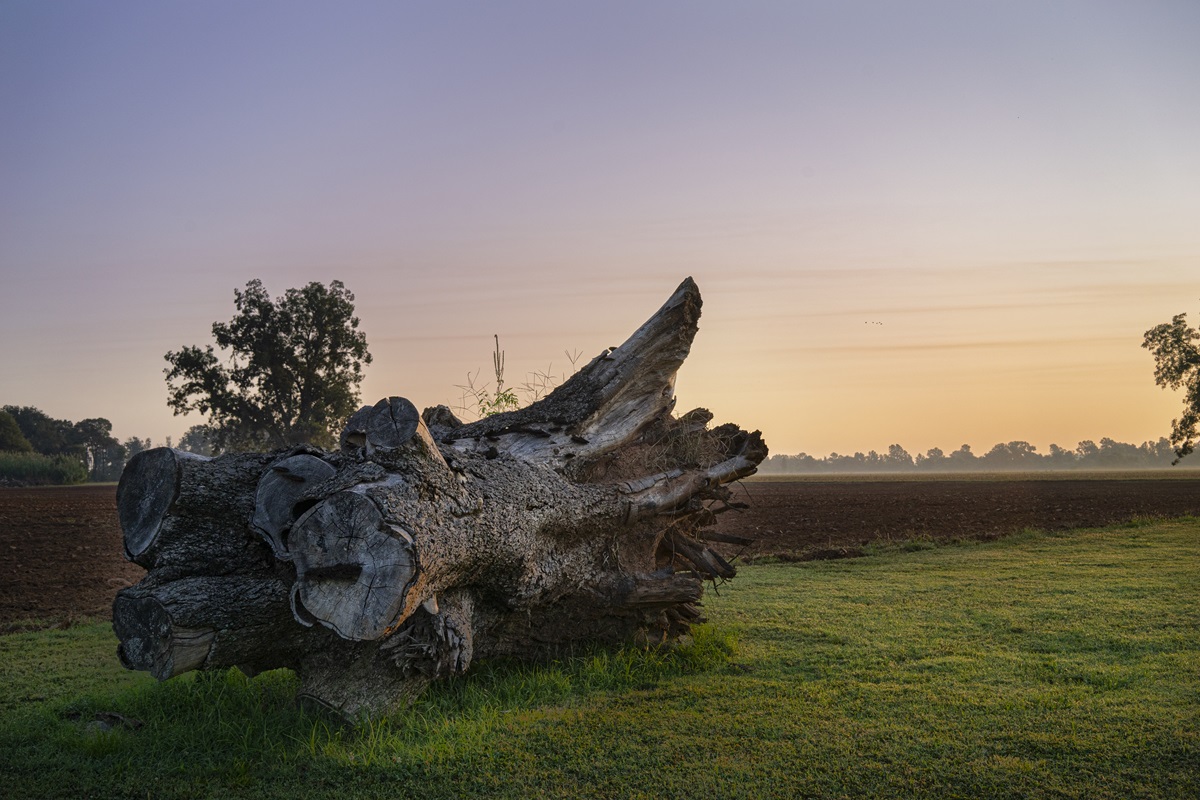
Fallen. A large felled tree lays next to a newly plowed field in Gilliam, LA.
Leah Floyd received an MFA in creative photography from the University of Florida and moved to New Orleans in 2011. Her interdisciplinary practice and interest in the South investigates the relationships between people and the land on which they live. Floyd enjoys exploring, documenting, and creating.
![]() Although it is just 35 minutes north of Baton Rouge, when you visit St. Francisville, you’ll feel like you’re a world away. Come be inspired by the history, culture, and topography that is St. Francisville!
Although it is just 35 minutes north of Baton Rouge, when you visit St. Francisville, you’ll feel like you’re a world away. Come be inspired by the history, culture, and topography that is St. Francisville!
